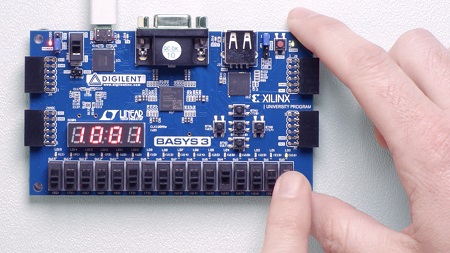
English | MP4 | AVC 1280×720 | AAC 48KHz 2ch | 1h 09m | 199 MB
Field-programmable gate arrays (FPGAs) straddle the boundary between hardware and software. They are customizable circuits that can be updated by customers or designers after manufacturing or deployment in the field. Rather than programming the chip with a series of instructions, FPGA developers create a logic structure from the gates inside the chip, establishing pathways for future data. A low-cost option for electronics prototyping and experimentation, FPGAs programming is a great entry point to digital systems design. This course provides an orientation to FPGAs, exploring the anatomy of the development boards and proprietary hardware description languages, the possibilities for implementation, and a comparison of the two major competing platforms, Xilinx and Intel. Instructor Eduardo Corpeño also provides demos that show a real application working on both platforms.
Topics include:
- What is an FPGA?
- FPGA use cases
- Logic blocks and interconnects
- The FPGA development process
- Reviewing the hardware description languages
- Running FPGA simulations
- Implementing an FPGA design
Table of Contents
Introduction
1 Get your digital design journey started
2 What you should know
Field Programmable Gate Arrays
3 What is an FPGA
4 FPGAs are not microcontrollers
5 FPGA applications and market
6 Inside an FPGA – Logic blocks
7 Inside an FPGA – Interconnects
8 Other blocks
Embedded Development Process
9 FPGA development process overview
10 FPGA families and development boards
11 Electronic design automation tools
12 Xilinx platform
13 Intel platform
Hardware Description Languages
14 Digital system modeling
15 Verilog and VHDL
16 Verilog primer
17 Simulation
18 Combinational logic example
19 bit adder simulation example
20 Sequential logic simulation example
Implementation
21 FPGA example implementation requirements
22 Demo system for the Intel platform
23 Intel implementation demo
24 Intel hardware demo
25 Demo system for the Xilinx platform
26 Xilinx implementation demo
27 Xilinx hardware demo
Conclusion
28 Next steps
Resolve the captcha to access the links!